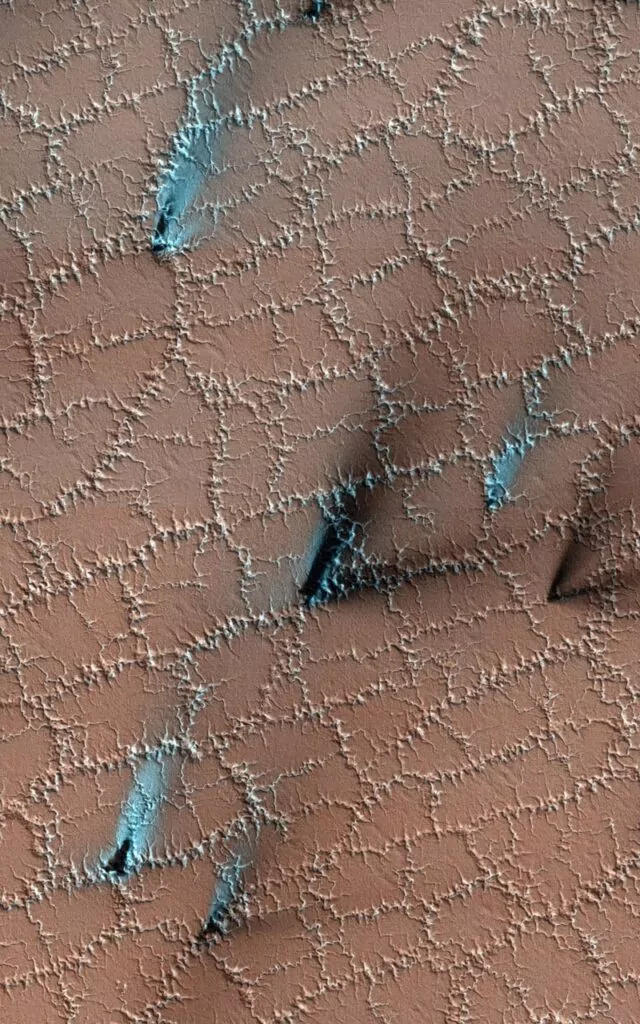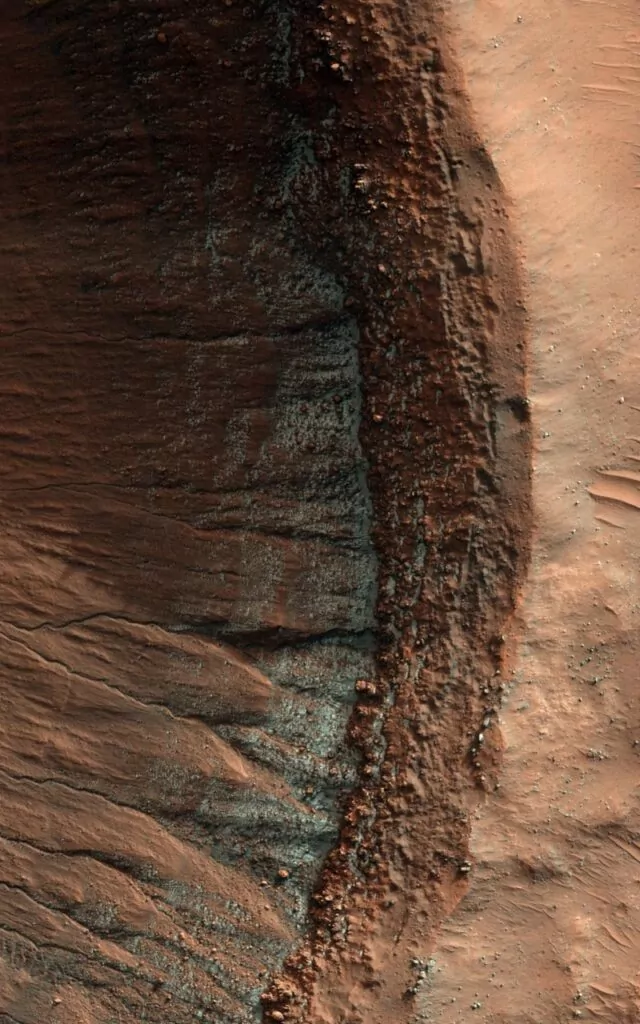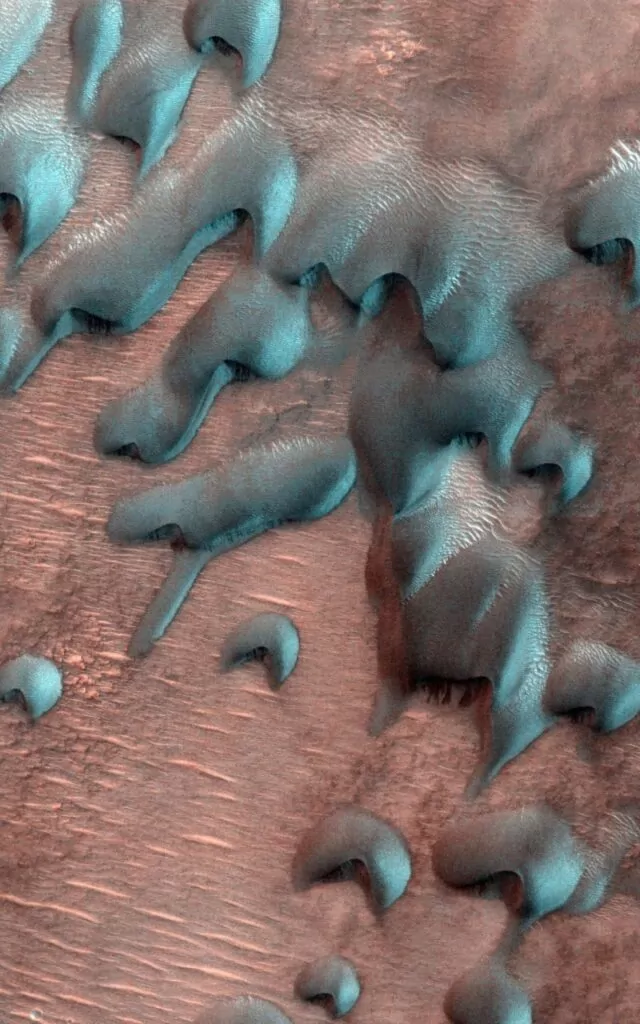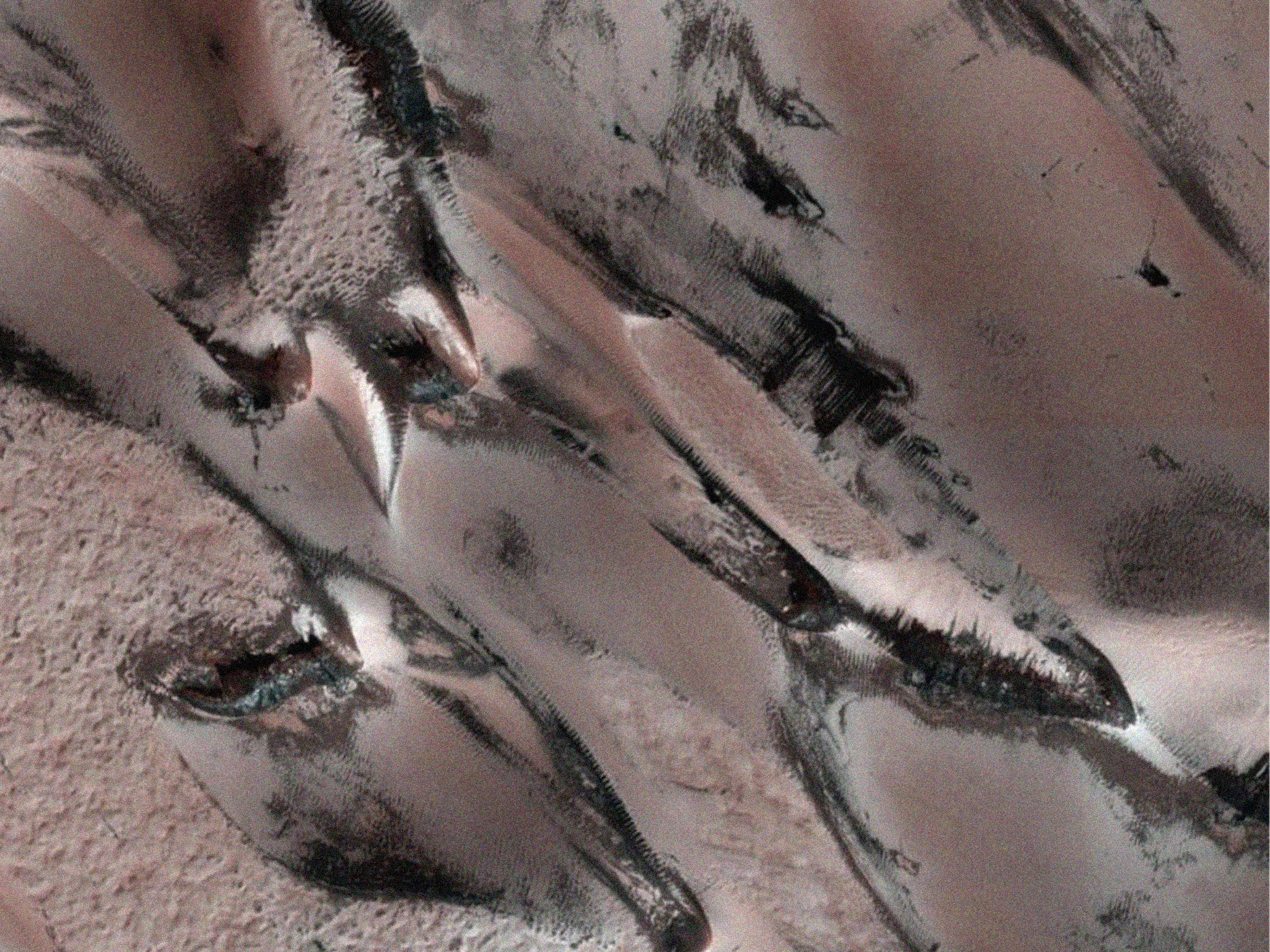Some photos of winter Mars from the MRO mission. The frost that can be seen on sand dunes and craters mainly consists of dry ice.
As for the characteristic dark spots, these are traces of spring «eruptions». With an increase in temperature, dry ice sublimates, and jets of carbon dioxide escaping from under the surface raise geyser-like fountains of dark dust. Then it settles down, creating various bizarre drawings.



Someone might ask a logical question, is it snowing on Mars? Scientists say yes. But this happens only at the poles of the planet during the coldest nights.
